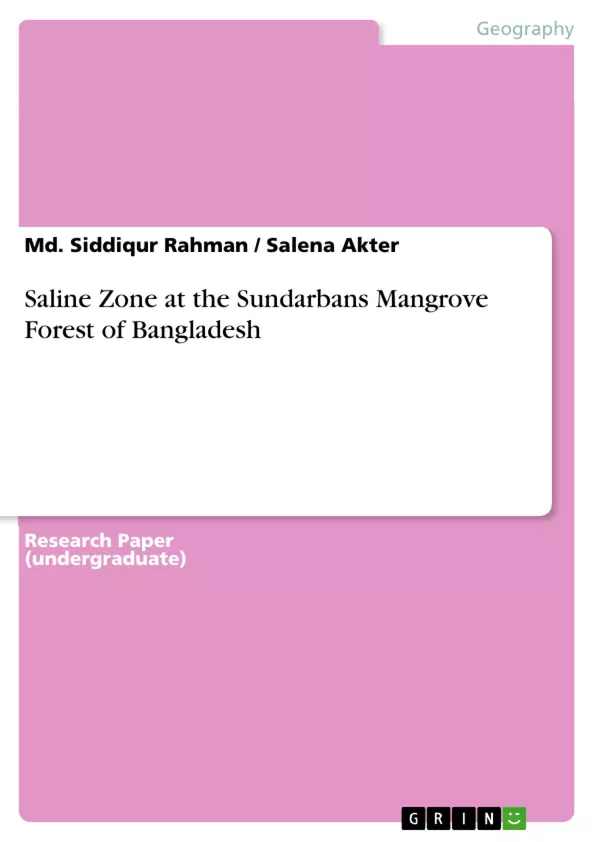The Sundarbans in Bangladesh part is one of the largest mangrove forests in the tropics comprising about six thousand square kilometers of forest area. It possesses unique character of having ebb and tide at every six hours, hence having salinity intrusion in its rivers and canals from Bay of Bengal. The forest is experiencing heavy saline intrusion in its lower saline zones. Therefore, there is a need to enumerate the saline water intensity in various zones of the forest. Present study tries to find out how much saline intensity exists in different rivers and canals of the Sundarbans. Results depicts that saline intensity was much higher in southwestern part, where it is moderate in northeastern part. Present study reveals the range of PH values between 6.5 and 7.7. PH was found to be lower in Kachikhali and Karamjol points, where Katka, Dublar char and Hiron point shows higher value i.e. near alkaline water. Western zone is higher saline intensive than eastern part. Electrical conductivity found to be between 5.2 and 24 dSm-1 (desi siemens per meter) in different sample collection points. Amount of NaCl (mg/L) was found between 15 and 30 mg/L. Therefore, the Sundarbans river systems and canals have strong saline intensity and the water quality seems to be brackish.
Inhaltsverzeichnis (Table of Contents)
- Abstract
- Keywords
- Introduction
- Materials and methods
- Materials
- Study site
- Physiography
- Results and discussions
- Conclusion
- References
Zielsetzung und Themenschwerpunkte (Objectives and Key Themes)
This study aims to investigate the salinity levels in different rivers and canals of the Sundarbans mangrove forest in Bangladesh. The study seeks to understand the spatial variation of salinity intensity across the forest and its implications for the ecosystem.
- Salinity intrusion in the Sundarbans mangrove forest
- Spatial variation of salinity levels across different zones
- Impact of salinity on the ecosystem and mangrove species
- Water quality parameters and their significance
- Conservation and management of the Sundarbans ecosystem
Zusammenfassung der Kapitel (Chapter Summaries)
The abstract provides a concise overview of the study's objectives, methodology, and key findings. The introduction delves into the significance of the Sundarbans mangrove forest, its ecological zones, and the challenges posed by saline water intrusion. The "Materials and Methods" section outlines the instruments used for data collection and the location of the study sites. The study focused on the spatial variation of salinity levels and the impact of salinity on the ecosystem. The chapter also discusses the water quality parameters, such as pH and electrical conductivity, and their implications for the mangrove forest.
Schlüsselwörter (Keywords)
The key terms and concepts explored in this research include saline intensity, pH, electrical conductivity (EC), NaCl, saline zone, and the Sundarbans mangrove forest. This study focuses on the spatial variation of salinity in the Sundarbans, highlighting its impact on the ecosystem and the importance of understanding these dynamics for effective conservation and management of this vital ecosystem.
- Arbeit zitieren
- Md. Siddiqur Rahman (Autor:in), Salena Akter (Autor:in), 2009, Saline Zone at the Sundarbans Mangrove Forest of Bangladesh, München, GRIN Verlag, https://www.hausarbeiten.de/document/283836


